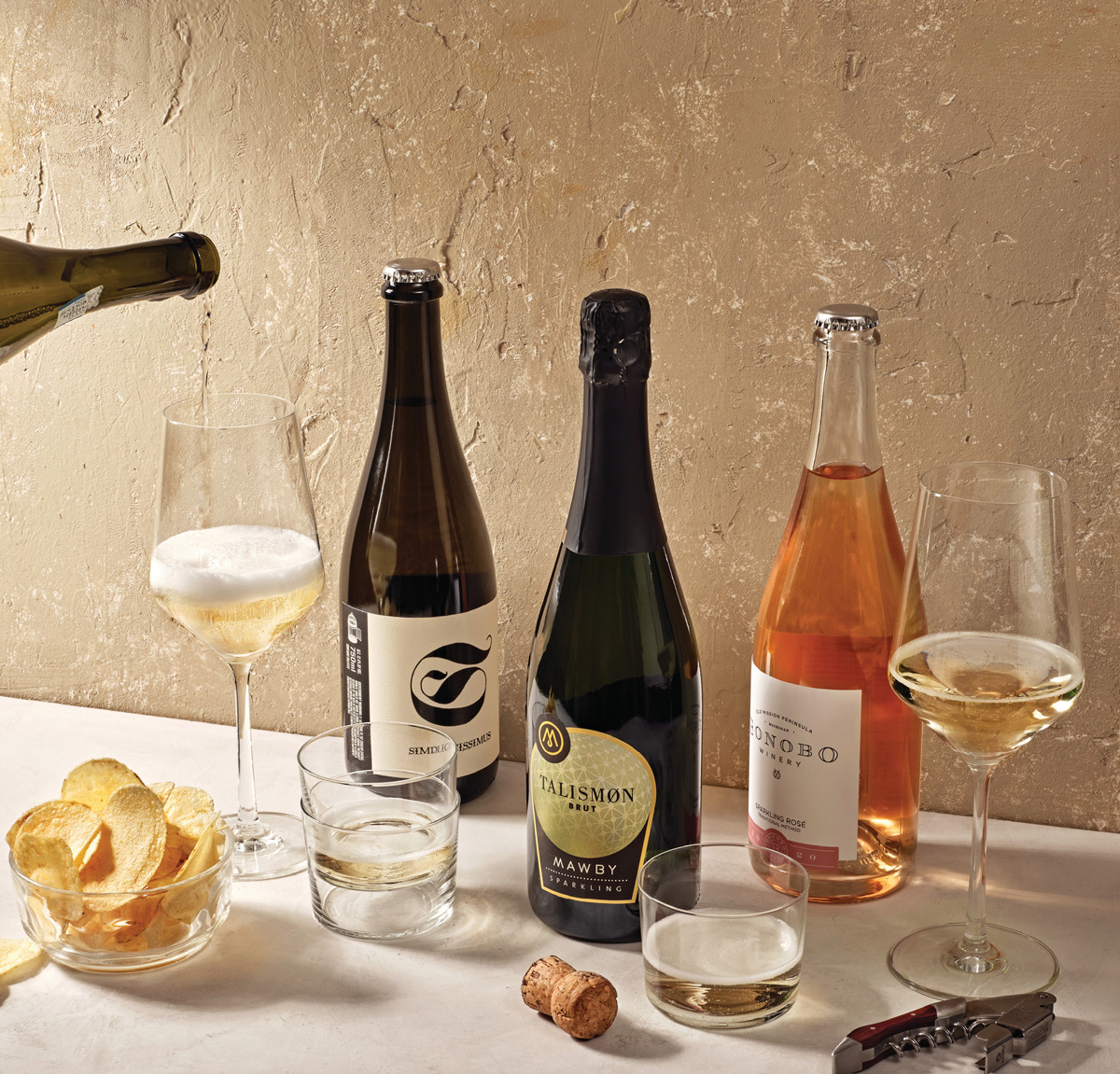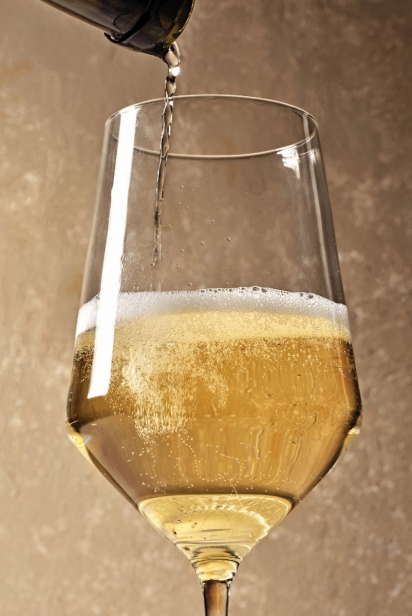Super Sparklers
ODDS ARE, if you enjoy wine, you love sparkling wine. Bubbly wine comes in numerous styles from many places. It pairs incredibly well with a wide variety of foods, including oysters and fermented or preserved foods. As with most wines, the styles of sparkling wine range from dry to sweet. One thing to keep in mind: All Champagne is sparkling wine but not all sparkling wine is Champagne.
The Roots of Sparkling Wine
Sparkling wine is said to have originated in France in 1531. Benedictine monks at the St. Hilaire monastery produced a wine called La Blanquette de Limoux by bottling the wine before it completed its first fermentation. Bubbly may have also been made elsewhere, but Blanquette de Limoux was the first iteration to be documented.
Many people, especially if they are French, will tell you that a monk named Dom Perignon (yes, he is the namesake of the delectable wine we know and love today) invented sparkling wine in 1697. The legend goes that he exclaimed, “Come quickly, I am tasting the stars!” However, in 1662 Christopher Merrett, an Englishman described the distinctive méthode Champenoise and is now widely recognized as the originator of sparkling wine.
The European aristocracy celebrated with sparkling wine in the 16<sup>th</sup> century. If you were fortunate to survive the French Revolution in 1789–99, you might have celebrated with Champagne. The practice of christening ships by breaking a bottle of bubbly over the bow contributed to the association of sparkling wine with celebrations. Sparkling wine is associated with celebrations such as weddings, New Year’s Eve and happy occasions such as promotions and graduations.
Production
Sparkling wine is produced worldwide. There are four popular ways to make sparkling wine:
• Traditional method, also known as méthode Champenoise;
• The Charmat or tank method, used to produce bulk quantities;
• The ancestral method, the oldest technique, which calls for bottling wine partway through primary fermentation to trap carbon dioxide gas in the bottle, creating a gentle, bubbly carbonation;
• The transfer method, where the wine is transferred, with sediment, to a pressurized tank after the second fermentation in the bottle and a short period of sur lie aging (French for “on the lees,” aka spent yeast cells), then filtered under pressure and bottled.
Sparkling wines such as Champagne (France), Cava (Spain) and Franciacorta (Italy) are made with the traditional method. Prosecco, an extremely popular style, is produced using the Charmat or tank method, which is much more economical than the traditional method.
Champagne, the king of wines and the wine of kings, is unique for a variety of reasons. It is made in the traditional method in which the second fermentation takes place inside a sealed bottle. Carbon dioxide, the primary byproduct of fermentation, dissolves in the wine, creating that soft, bubbly mouthfeel.
Champagne can only be produced from three grapes: Chardonnay, Pinot Noir and Pinot Meunier grown in Champagne. The wine must be produced in the Champagne region of France. The vast majority of Champagne is non-vintage (NV). These wines must age for a minimum of 15 months before release, with at least 12 months resting on lees left in the bottle after that second fermentation. The minimum aging time for vintage Champagnes (all the grapes are from a single vintage) is three years. This is why Champagne will always be pricier than other sparkling wines! Champagne, like the other sparkling wines, has a hierarchy of sweetness levels. They range from driest to sweetest:
1. Brut Nature;
2. Extra Brut;
3. Brut (the most popular level of sweetness)
4. Extra Dry;
5. Dry;
6. Demi-Sec;
7. Doux: usually served with dessert.
Pairings
Imagine someone invites you to dinner, and you thoughtfully ask what’s on the menu so you may bring the proper wine. Your host replies that they haven’t gone to the store yet. Which wine should you bring? Sparkling wine, of course! It pairs with just about everything (or nothing at all).
Bubbly wines pair well with food for a range of reasons. The bubbles cleanse your palate as you drink. Sparkling wines have high acidity, making you salivate and desire more food. They are always served cold and the temperature refreshes your palate. The carbonation cuts right through salt and balances the dish. Last but not least, they have virtually no tannin, which makes them food-friendly.
The sparkling texture of these wines pairs with salty, briny food because their minerality complements the saltiness of the food. The second fermentation in the traditional method especially complements fermented food well. Sparkling wines “stand up to” very full-flavored foods. The key is that acidic foods want to be paired with acidic wines!
Classic pairings include oysters (salty and briny), caviar (very salty), olives and aged hard cheeses like Parmesan Reggiano, aged cheddar or aged gouda. Fried chicken marries well with sparkling wine; the crunch of fried foods synergizes with the bubbly texture of the sparkling wine. Another beloved fried dish that’s better with a bit of bubbly is fish and chips.
Sparklers love salt! Potato chips are another fantastic pairing with bubbles. The author’s favorite is Brut Champagne paired with Better Made potato chips and classic French onion dip—try it. Salted popcorn and salted nuts are delicious with sparkling wine.
Savory dishes also pair nicely with bubbles. Mushrooms with all their umami are great with bubbly wine.
Eggs are notoriously difficult to pair with wine, but that’s where sparkling wine comes in—enjoy a glass at brunch.
À votre santé! (To your health!)
Michael Schafer, The Wine Counselor “edu-tains” about wine and spirits. Find him at TheWineCounselor.com.





